-
Archives
- November 2017
- November 2016
- October 2016
- April 2016
- March 2016
- November 2015
- February 2015
- July 2014
- June 2014
- October 2013
- January 2013
- October 2012
- July 2012
- April 2012
- March 2012
- February 2012
- January 2012
- December 2011
- November 2011
- October 2011
- September 2011
- August 2011
- July 2011
- March 2011
- February 2011
- January 2011
- November 2010
- September 2010
- April 2010
- March 2010
- February 2010
- March 2009
- February 2009
- March 2008
- February 2008
- November 2006
- August 2006
- March 2006
- August 2005
- July 2005
-
Meta
Daily Archives: November 9, 2015
Al-Said, not Al-Saud 2
We’re On the Road
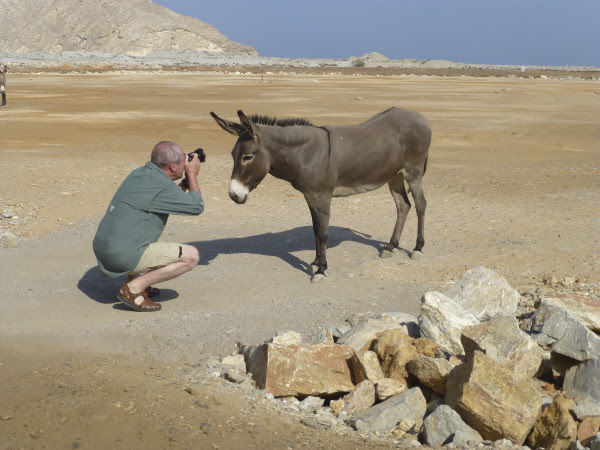
Mid-morning, a couple hundred kilometers south of Muscat. We drive through Wadi Arbiyyin, past sleepy farming hamlets shaded by dense groves of date palms and banana trees. The groves are arcs of feathery green through which wind falaj (canals) carrying cool blue water from the shallow river paralleling our track. When we stop the car, a soft duvet of silence enfolds us. No engines, no airplanes overhead, a perfect stillness through which I hear the crunch of wadi grass tugged by a black donkey, a cough from behind a thick slab wall, the dull thwock of someone chopping, the slap of wet clothing about to be hung to dry.
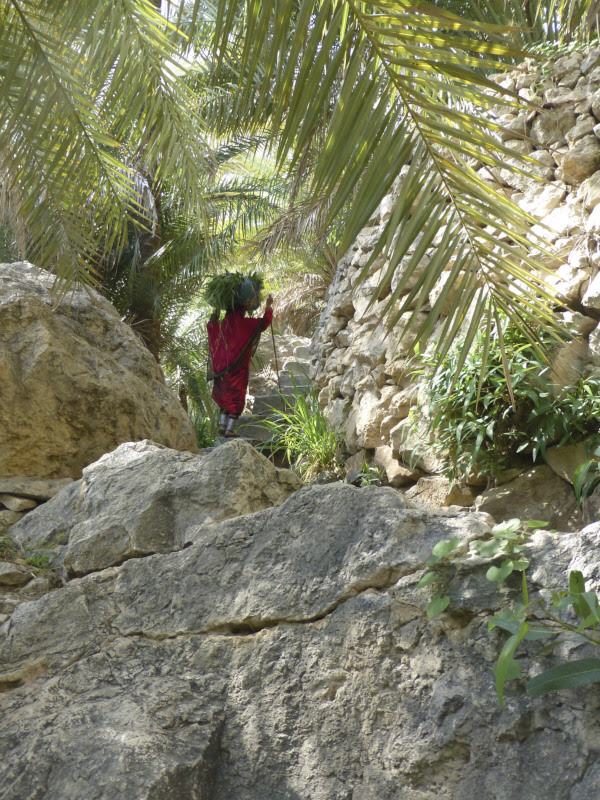
The only visible activity in Wadi Arbiyyin mid-morning are the many-colored long-haired goats, coats carefully combed and trimmed, out to scavenge the best thorn from a low acacia.
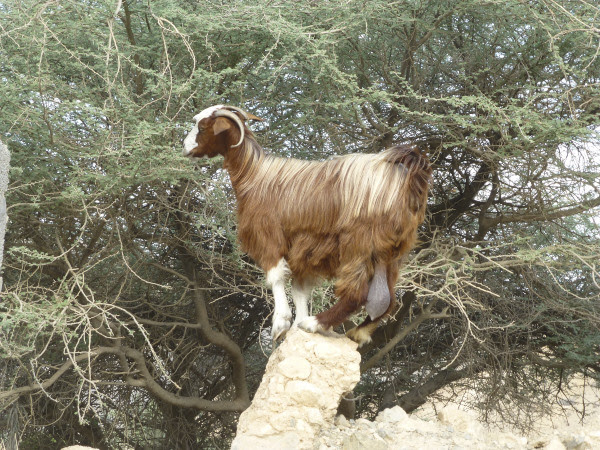
The sun is hot, perhaps 80 degrees, but the shade is divine. The sum of the two gives you a glimpse into this country of yin and yang: opulent new homes fronting ancient village simplicity, desert dunes of the finest red sand below tumultuous mountains of brown stone, baking dry wadis (watercourses) of silvery boulders holding limpid hidden pools of crystal green cool water in their lap.
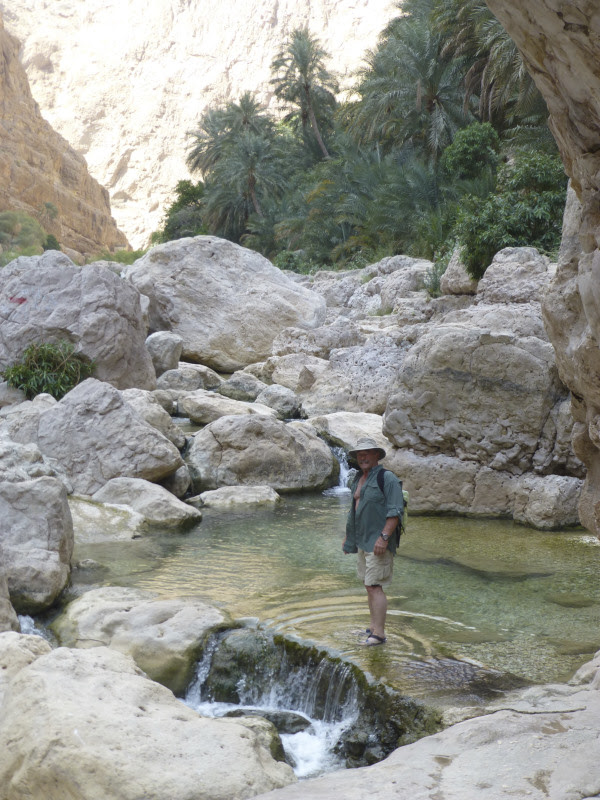
The road winds to the top of the ragged wadi cliffs, depositing us on a frenetically rocky low plateau speckled with ivory, beige and salmon-color boulders. “There, no not there, over there,” Bernard points out a line of grey-black rocks. Our dirt track brings us nearer. As we approach, pale dust pluming behind us, we see that the blackness now swaths the plateau like Dracula’s cape over a fresh victim. “Must be lava,” Bernard says, oblivious to the fact there are no volcanoes around. And now that we live in Bend, we do know volcanoes. I don’t hesitate to point out the lack of a lava source to Bernard, but after a few minutes I have to agree with him. It does look like lava. Continuing on, the roadway carves through a hump of earth resembling a slice of fruitcake (I do love fruitcake), with soft red earth instead of whisky-soaked cake and assorted cobbles instead of citron peel and candied cherries. “This looks like ground that used to be underwater,” I say, oblivious to the fact that we’re on a plateau and there’s no sign of a watercourse of any kind.
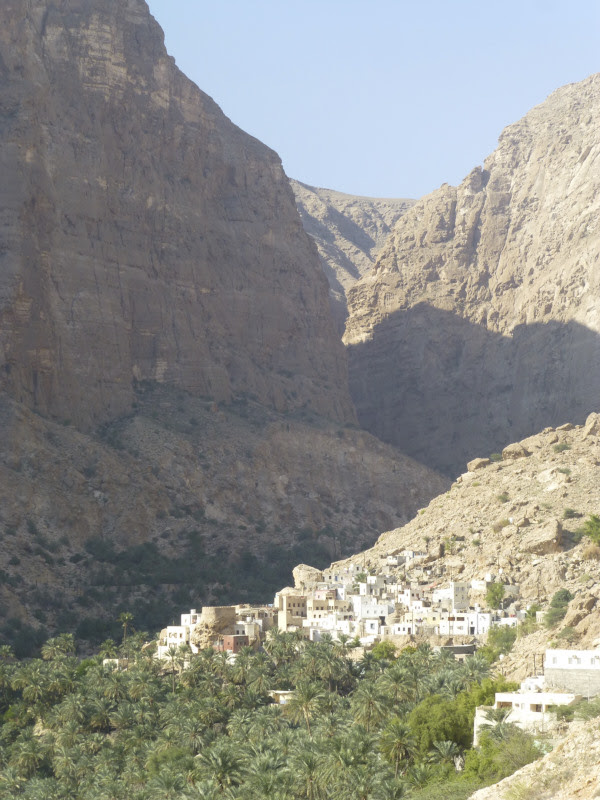
Stumped by our ignorance, neither of us hazarded a word on the subject till the next day, when we happened upon two German geologists at the bottom of the Bimah Sinkhole, proof that in travel, serendipity is everything. Really, I should say they were at the surface of the water at the bottom of the Bimah Sinkhole, because they were very much alive and doing measurements to glean obscure facts about sinkholes. Instead of swimming — and I must say the green-blue pool of fresh+salt water was tremendously inviting–, we questioned them about the incomprehensible landscape we’re seeing.
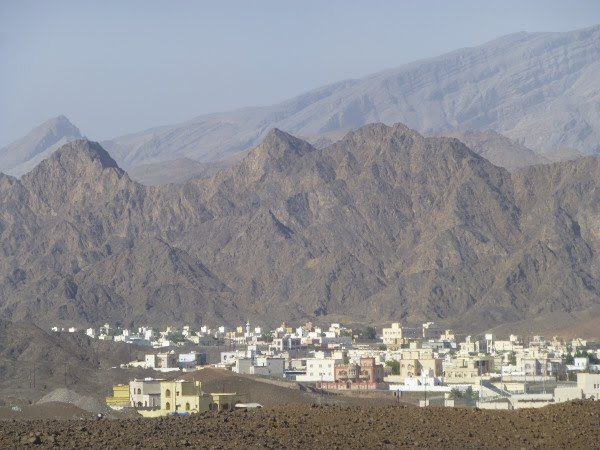
Allow me to distill half an hour of education into one simple sentence: All of Oman used to be under the sea. The immense cliffs that look like melted wax, that black mantle over orange rocks, the convoluted fins of brown, then grey, then rust, all are features created by forces under the sea.
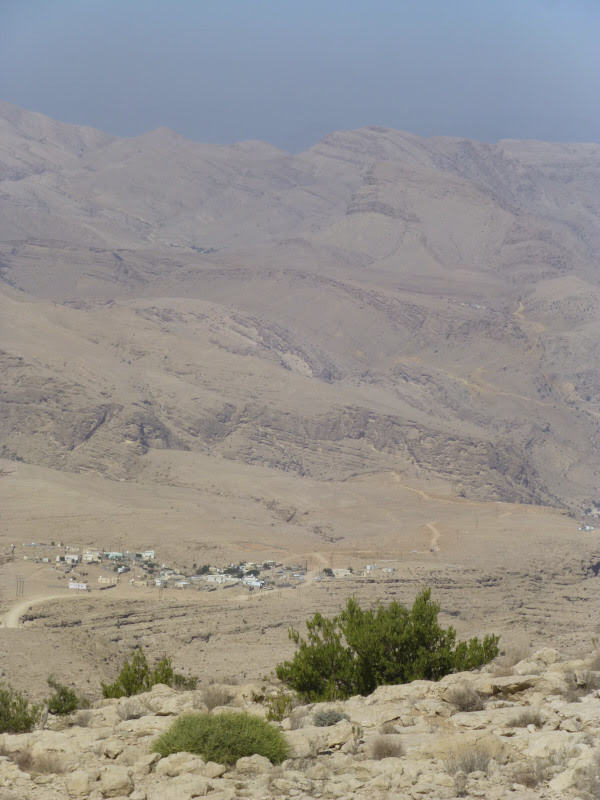
I’ve seen lots of landscapes in our travels, but never have I seen one shaped so purely by existing submerged for eons. None of the shapes that come from erosion, such as in our glorious national parks in Utah, or the sharp mountains created by tectonic uplifts, like the Himalayas, exist here. It’s another world, and not only in terms of what’s around us.
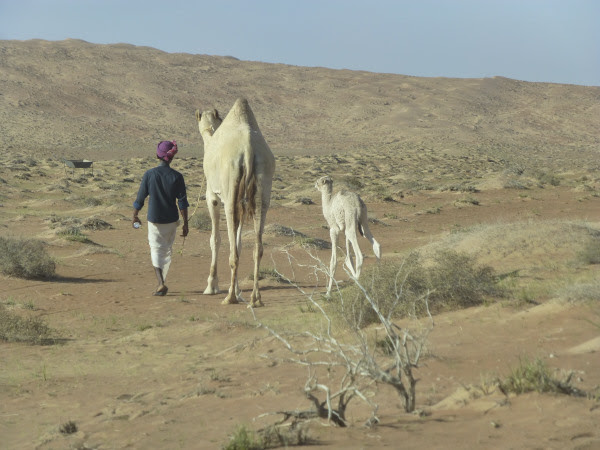
Everything that I thought I knew from elsewhere has a particular Omani spin to ti. I’ve sipped tiny china cups of scalding coffee spiced with cardamom, savored small, soft brown dates of dreamy sweetness, torn a mouthful of hot flatbread rolled around freshly scrambled eggs speckled with hot sauce.
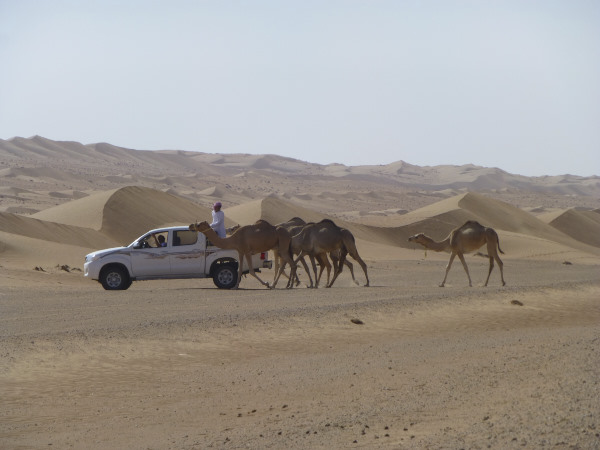
One evening in the heart of the Wahiba Sands we ate slow-braised lamb shanks under an open-sided Bedouin tent, the heat of the day wafting gently from sand that felt like a plush velvet blanket around my bare feet. Climbing a dune the next morning literally took my breath away, but was rewarded by a tangerine sun rising behind the undulating sea of sand stretching 100 kilometers to the coast. Putting my nose close to the sand — not to sniff, just to see…I’m pretty nearsighted– I was able to pick out myriad dainty tracks coursing over the surface, evidence of a nighttime insect jamboree. The steep slide down the dune face took a quarter of the time as going up and was four times the fun.

Another evening we watched shooting stars from red cushions set on a Persian carpet within feet of the Gulf of Oman, and the next morning emerged from our tent to waves softly lapping the cobbled sands as a small white fishing boat puttered up the coast to bring in the morning’s catch.
As far as village life, it’s as if India across the way (far across the way, let’s face it) has sucked all the chaos of life away from Omani villages. They’re empty here. I don’t mean that they’re abandoned or vacant. The courtyard walls which enclose houses in Omani villages houses (which is all we can see) look well-tended, leading me to believe they’re all inhabited. It’s rather that we don’t see anyone doing anything, whether working the wadi groves, buying something in a shop, or simply going from place to place on the street. In the not insubstantial number of kilometers we’ve already driven, only once have we seen someone minding a herd of goats.
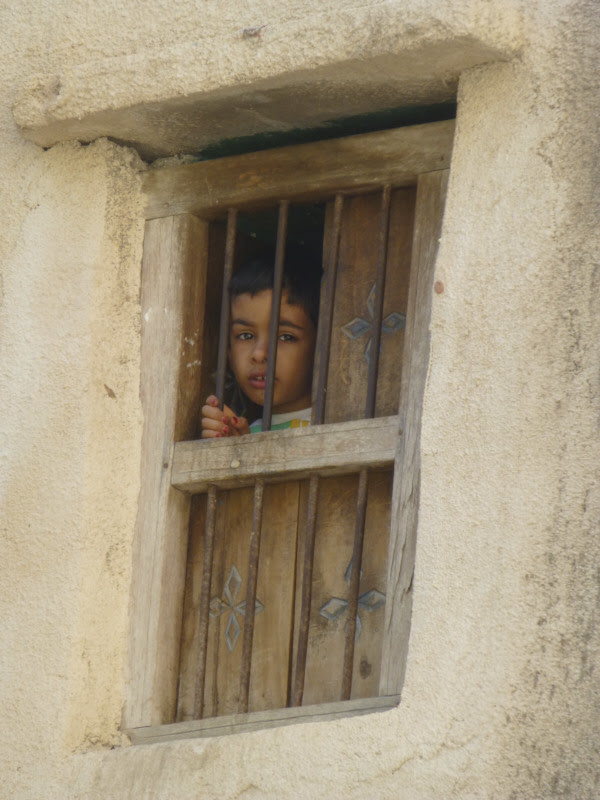
Village commerce is modest and repetitive, which I know for sure because all signs are translated into English. There’ll be a Coffee Shop, which is actually a small room offering Nescafe, a cooler of sodas, sometimes a trunk freezer with ice cream, occasionally a kebab or flat bread. There’ll also be a Ladies Tailoring and a Gents Tailoring, definitely separate. And perhaps a Fruits & Vegetables For Sale shop. In bigger villages that sign may say Fruits & Vegetables & Dates, and share a wall with a Barber. And in towns of substance there may be a Hypermarket, some small restaurants typically serving Turkish or Indian food, and assorted electronics, hardware and feed stores. The towns actually are the one place where we see activity, with some Toyota Land Cruiser pickups and 4x4s coming and going on errands.
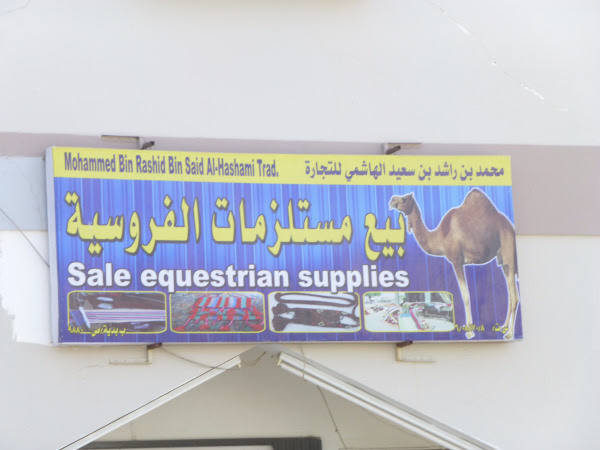
Here’s another thing about Oman: like the villages, the roads are pretty much empty. This is strange, given that Oman is an oil-rich country where fuel costs little more than $1.10/gallon. Empty roads and I get along very well. No white-knuckled clutching of the oh-shit handle when Bernard swerves around a bullock cart, narrowly missing 15 oncoming motorbikes. No worries about avoiding that somnolent sacred cow in the middle of the road while refraining from crashing off the ragged pavement edge. No yelps as a pedestrian steps into the causeway, oblivious to how fast we’re really going. What traffic there is moves along civilly. No honking. NO HONKING!!!! Not only is there an absence of co-traffic, the roads are perfect. No potholes to dodge, little dust to inhale. It’s been so quiet out here that we’ve actually been able to speak to each other.
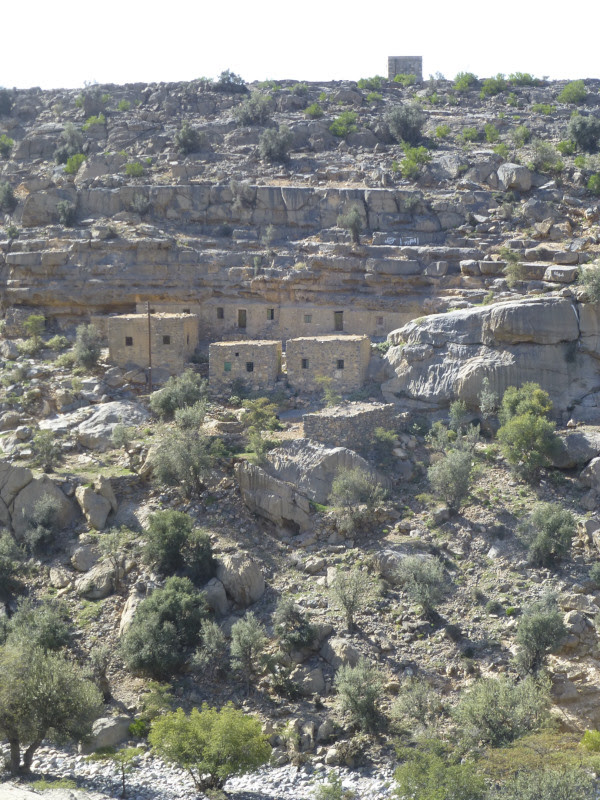
One last thing: yesterday an elderly woman in Sayq village invited us into her home. You have to imagine this village, which was like the ones I described above only smaller, quieter and sun drenched. The small central plaza past the mosque was deserted except for two women, one in a black robe, the other in yellow, walking toward us and chatting loudly. I expected them to detour around us, obvious foreigners that we were, but instead they came up, making gestures for us to follow them. Down the street, a left turn into a narrow alley and we find ourselves stooping under the low sill of a carved red wood door. Now we’re inside someone’s private courtyard, where we leave our sandals as the women wave us to follow them barefoot. We enter a long, narrow room covered in yellow Persian carpet, walls white-washed, the floor lined with large gold-tasseled cushions. Shuttered slit windows keep the room cool and dim.
At the far end I see an immense brass platter heaped with fruits, nuts and bowls of Omani sweets. There are chased brass basins of water to rinse our fingers. A carafe sits amidst a matched set of little china cups painted with burgundy and gold. While Bernard does the polite thing and waits by the door, I feel myself gravitate toward the platter. It’s Dina as metal shaving against food as magnet, and we all know who’s going to win in that contest. Fortunately this appears to please our hostesses immensely. They put their fingers to their lips and make loud chomping noises, pointing next at the platter, and then at me and Bernard.
What is going on here? The ladies didn’t even know we were coming, so they couldn’t have prepared this for us. Are they a clandestine restaurant? Is this the left overs from breakfast? I’ll report the details in a few days….
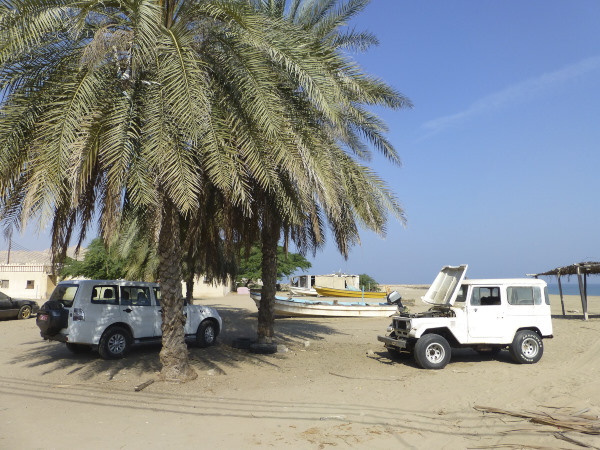
Posted in Dispatches, Oman
Leave a comment










